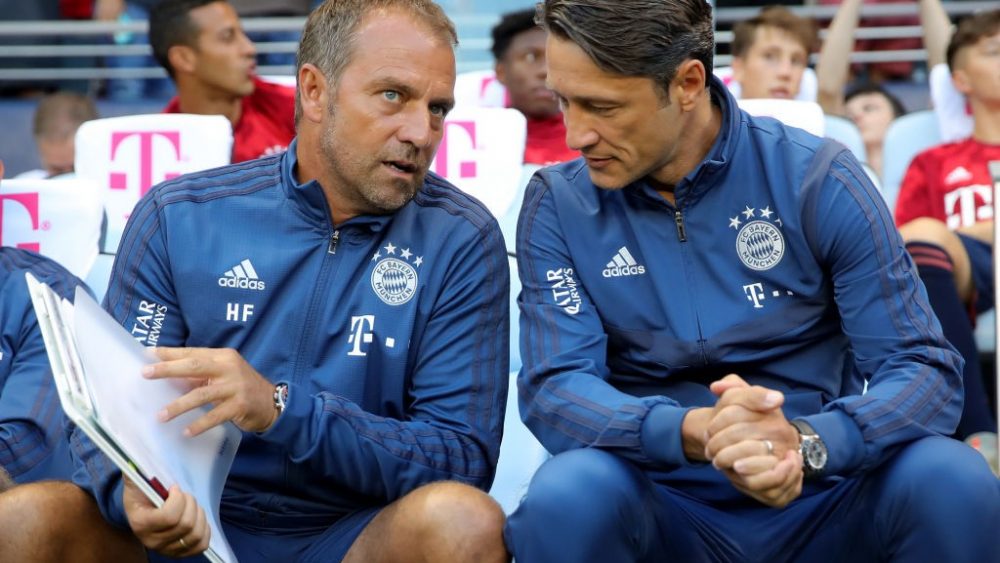Supercup Preview Pt. 2: The truth is on the pitch!
“I did not like these statements” – six spare words seem enough to plunge FC Bayern into turmoil these days. These were the words Bayern CEO Karl-Heinz Rummenige chose to reprimand his head coach Niko Kovač for his statement on German television that he was “very confident” that Leroy Sané would join FC Bayern just a few hours earlier.
Of course, one could discuss at length whether Kovač really is Rummenige’s preferred head coach or whether he rather is, as he himself puts it, “an employee of the club and a very loyal man. I have a set of duties that I have to carry out and that’s what I am going to do.“ Combine the evidence and their bond certainly seems to be that of a working relationship rather than an intimate friendship.
But what does not have to be a problem per se flies in the face of an otherwise positive pre-season preparation and fits the bigger picture of the public impression the club has left in recent months. The dominant issues are Leroy Sané, Uli Hoeneß and the ostensible conflict between Karl-Heinz Rummenige and Niko Kovač. Sadly, this is appropriately characteristic of a club that has lost its air of self-assuredness, composure, and imperturbable calmness.
The best pre-season preparation in years?
Not to mention that Bayern already had a very strong squad available, as Rummenige was keen to point out to everyone. And in fact, the team has given a very good account of itself on the pitch so far this summer. First in the USA with two convincing victories against Real and Milan after an unfortunate loss to Arsenal, and then in Munich with the 6-1 drubbing of Fenerbahçe. Even the tight defeat against Tottenham on penalties showed a lot of promise.
It could all have been so simple. Bayern’s US tour was a resounding success in sporting terms and also off the pitch they did not set a foot wrong – not least because Karl-Heinz Rummenige’s reassurance that Bayern would have assembled a very competitive squad by the time the new season kicks off could calm down the speculations about Leroy Sané a bit.
So there is plenty of reason to be happy with the team’s hitherto performance in Munich. Off the pitch too, one would think, considering Rummenige’s continual attempts to placate transfer doubts. But not so. The serenity did not even survive the trip back across the Atlantic to Munich. That Rummenige saw the need to reprimand his coach for an otherwise unremarkable statement on the Sané transfer prospects distinctly demonstrates the precariousness of the whole transfer situation at Bayern including the Sané deal and its potential domino stone-like tail of subsequent transfer efforts.
Fresh inspiration from the coaching bench?
Let us shift from domino stones to chess figures. Because the Bayern chess board has had a lot to offer over the slew of test games this summer. It seems as though tactics and training have both enjoyed a complete rejuvenation. The role of Hansi Flick, Bayern’s new assistant coach, in this is unclear but it is striking how new training methods and new tactical elements have been appearing at Bayern since his arrival. How much of the new main man is he? Speculation is rife and that Rummenige has praised him in an answer to a reporter’s question on Kovač will only add fuel to the fire.
However, at the end of the day it does not really matter who is ultimately responsible for introducing what element in training. It is more important that Bayern seem to have successfully identified and addressed last year’s major weaknesses. Take, for example, the new approach of training complex in-game plays on a hexagon-shaped pitch.
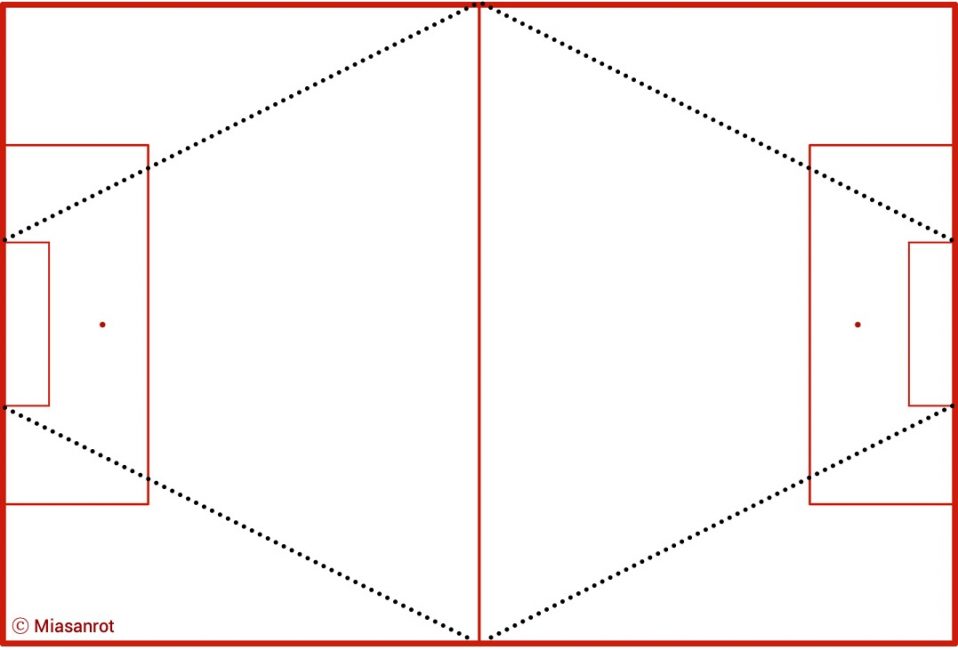
The idea is simple: take a common pitch, cut off the corners, and thus force players to find solutions through the middle and the half spaces. There is also increased pressure on the team in possession because the defending team has to cover less space in pressing. Thus, the attacking team can only advance through concentrated positional play and short vertical and diagonal passes. There is no option left for convenient and predictable wing play or long balls.
From training to the pitch
Bayern’s novel training forms quickly paid off in the preparation matches. Even the early game against Arsenal already allowed first glimpses of some of the tactical evolutions Bayern might have in store for us this season. Kovač started his team in a 4-3-3, similar to how he had begun last season too. This time, however, the players played closer together and moved around more in possession.
The developments continued in the game against Real. The movements leading up to Bayern’s opening goal indicated an intention for greater variability in approaching the opponent’s penalty box. Müller as the central striker cut back diagonally to occupy a space between the lines. Alaba overlapped Coman and created a passing opportunity to Müller. The far side winger moved into Müller’s initial centre-forward position and Tolisso quickly closed in on the penalty box from the back. Sanches filled the open space behind Alaba, securing the back. In a fluid sequence of movements, a constellation of players emerged that allowed this enticing combination to happen while keeping the space in behind safely occupied.
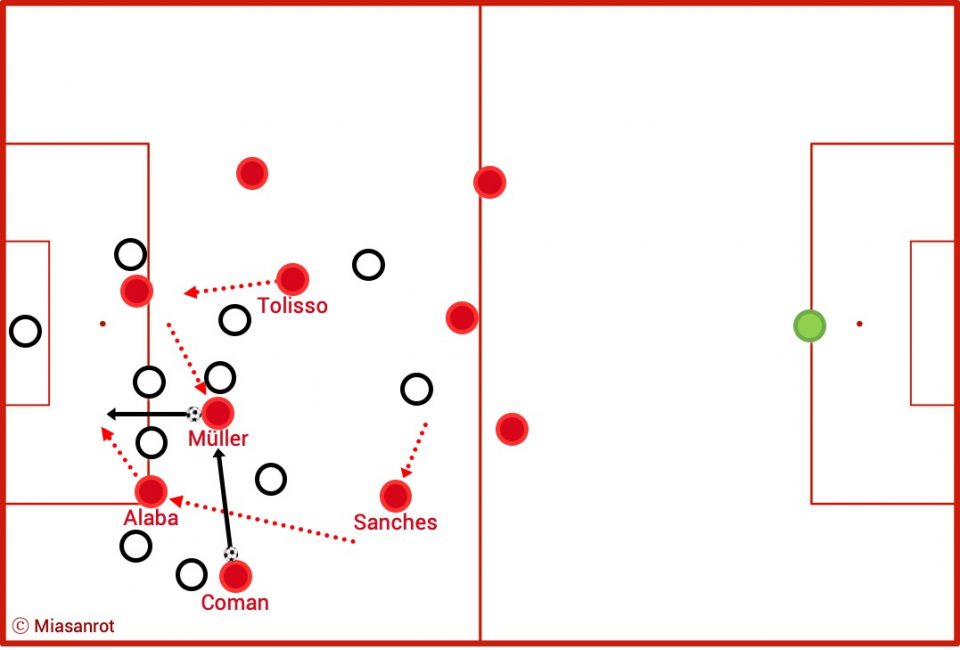
So Coman played the pass to Müller, Müller played it into the path of the quickly advancing Alaba before it ultimately arrived at Tolisso, who scored the leading goal. And this situation was not an isolated incident. Even when they had less accomplished players on the pitch, the team still adhered to these new-found principles. Against Tottenham, for instance, they executed similar plays with only four seasoned professionals among their ranks.
Improved build-up play?
Bayern puts much more emphasis on playing the ball through the centre or the half spaces in build-up play now. At first glance this seems similar to what they did this time last year. The difference is that last season there usually was a considerable open space between the holding midfielder and the two offensive midfielders, which left a large gap in the centre making it much harder to successfully gegenpress immediately upon a loss of possession.
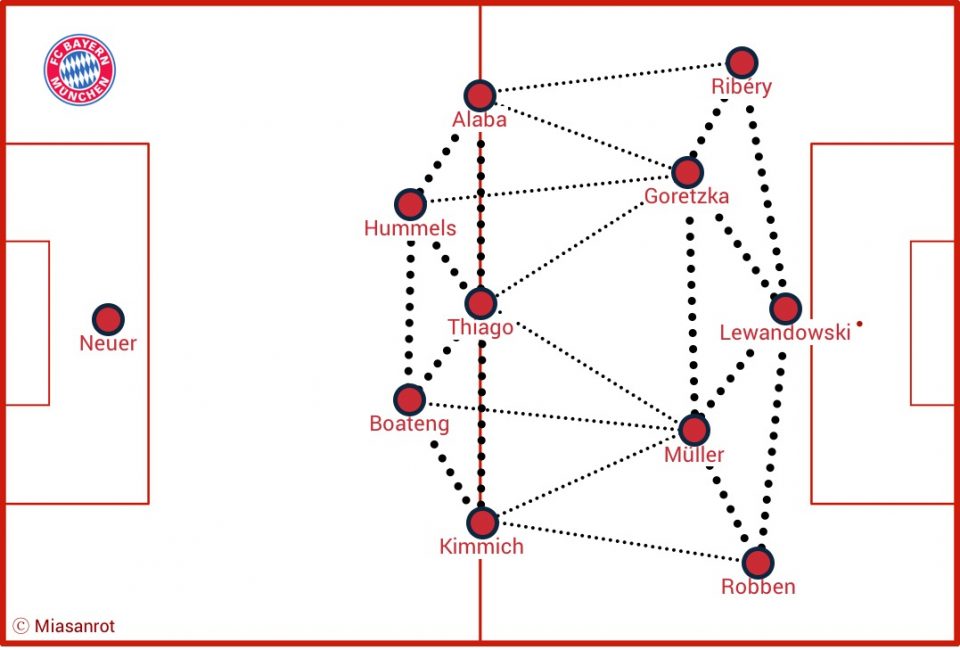
During preparation at least Bayern could improve on that. The two number eights were still positioned very high but they balanced each other out. When one was high, the other stayed behind and covered his back. Consider for example this attack against Real in the 73rd minute.
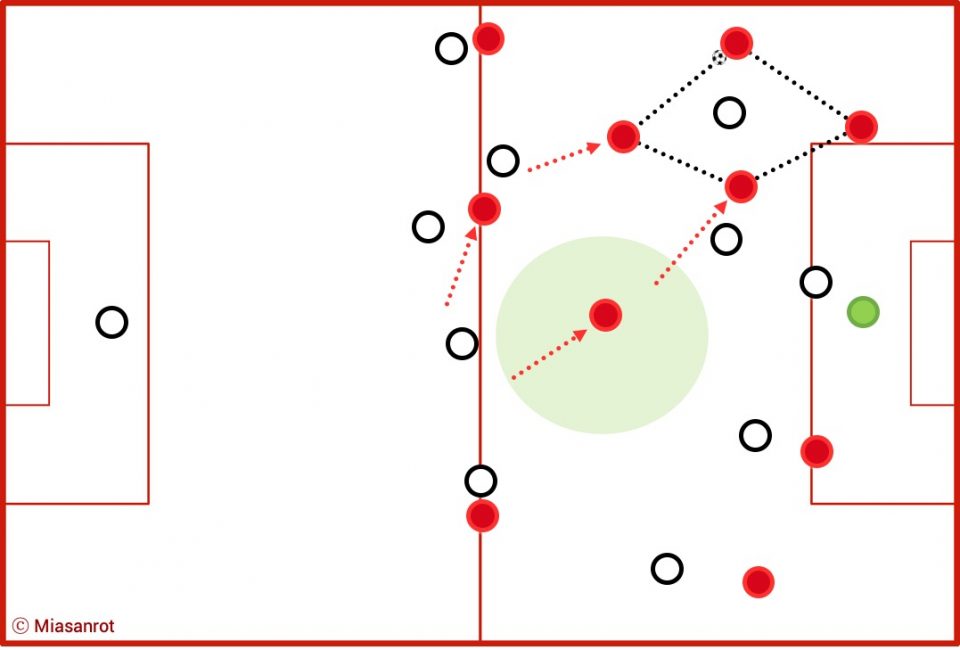
Real put on pressure in attack but failed to push up and close the spaces from behind. Bayern’s midfield reacted swiftly. Having been pressed to the right flank, the player in possession did not seek refuge in a long ball (as he would often have done in the past). Instead, a defender, the holding midfielder and one of the two number eights advanced towards him. The resulting diamond presented ample passing opportunities for the player in possession. The now vacated space in the centre was subsequently occupied by the second number eight closing in from the opposite side. Bayern finished the movement and quickly looked for the goal – unfortunately to no avail.
From single situations to consistency
It may be the preparation’s most surprising observation that Bayern’s game had style, was full of clever ideas, and could please the eye with a good quality game in possession. However, there is still enough reason to be cautious. Last season’s start also showed a lot of promise before Bayern’s game soon fell apart and crisis struck. To prevent the same from happening again the coaches will have to make early gains permanent and promote greater variability so that Bayern’s style of play will not be found out quite so quickly again.
Because should the same sequence of last year’s events repeat itself, things are bound to become complicated again. The failure to find answers to the answers of the competition was one of the major causes of last autumn’s crisis.
There is still enough room for improvement and no reason for complacency. At times, Bayern left themselves open on the counter because they failed to secure their back lines or exercised a hara-kiri-like gegenpressing that opened more spaces than it exerted pressure. One solution in such situations could be to situatively pull in the full-backs. Kimmich and Alaba would thus become an additional safety for the holding midfielder while being able to return quickly to their original positions.
Boateng and Sanches – the preparation’s clear winners?
All taken together this year’s preparation has left us with more positive than negative impressions and a lot to look forward to in the weeks and months ahead. Among the most pleasing surprises has been the resurgence of Jerome Boateng and Renato Sanches, who appear to have regained their joy of football. While Boateng’s long balls from the back are as laser-focused and his defensive work as confident as it has ever been, Sanches has beguiled the senses with his unique dynamic unpredictability as a playmaker between the lines.
Even though Boateng still keeps a low profile in public and Sanches rightly points out that he had started well last season too only to end up playing preciously little, their early form will heighten many a fan’s expectations. Should they be able to continue their upward trend, they will both be valuable reinforcements to the Bayern squad. It is up to the coaches to do their best to support them in their development.
Their first opportunity to do so comes this Saturday night when Bayern have their first chance to prove what their pre-season preparations have really been worth. Kingsley Coman and Sege Gnabry will probably not be fit in time for the match, but the result is a secondary concern anyway. It is the performance that matters. And whether Karl-Heinz Rummenige likes certain statements or not will be of secondary importance to him too as long as he likes what his team delivers on the pitch.

